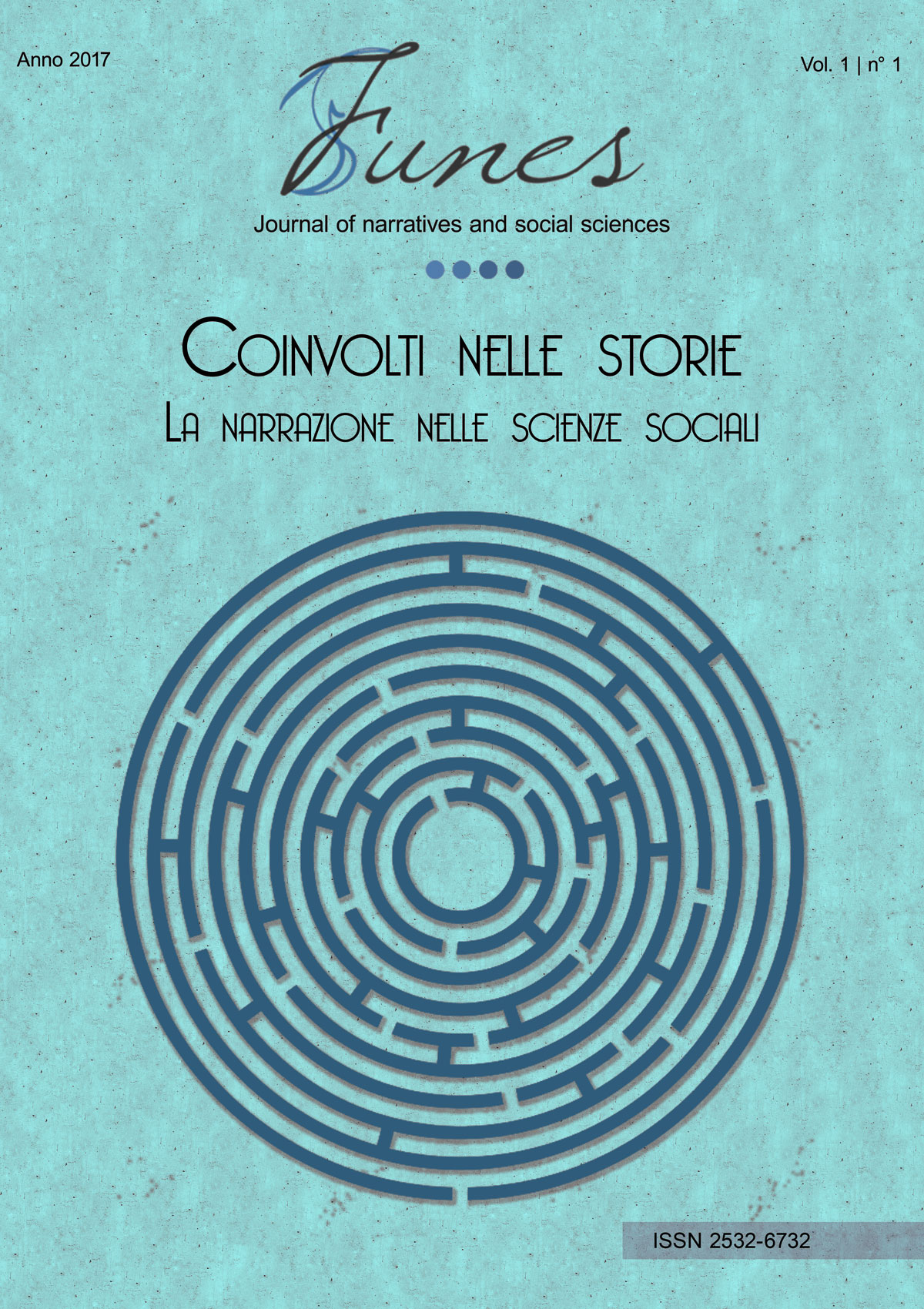Religione, sport e mascolinità: L’islam diasporico e le storie dei pugili musulmani
Abstract
Lo scopo di questo saggio è di condividere alcune considerazioni preliminari sulla definizione di mascolinità religiosa negli sport, un ambito dove la performativà del corpo è importante, per cui
rilevante dal punto del vista del genere, mentre la religione è stata raramente presa in considerazione. Focalizzandosi sull’uso della religione nella narrazione dei pugili musulmani
diasporici, il saggio sostiene che le caratteristiche del pugilato, e la sua relazione con l’islam contemporaneo, crea un campo di osservazione privilegiato per osservare allo stesso tempo sia
l’affermazione dell’emergente mascolinità musulmana, che il modo in cui l’attuale discorso pubblico sull’islam influenzi la rielaborazione delle appartenenze dei Musulmani diasporici.
Parole chiave: Islam, pugilato, diaspora musulmana, mascolinità, religiosità.
Abstract
The essay aims to share some preliminary considerations on the definition of religious masculinities in sports, a domain where body’s performativity is important, therefore relevant
from a gender point of view, and religion has rarely been taken into account. Focusing on the use of religion in diasporic Muslims boxers’ narrative, the essay argues that the characteristics
of boxing, and its relationship to contemporary Islam, make it a privileged field to observe both the affirmation of ‘emerging’ Muslim masculinities, and the way contemporary public discourse
on Islam affects the re-elaboration of diasporic Muslims’ belongings.
Keywords: Islam, boxe, diasporic Muslims, masculinities, religiosity.
Downloads
Riferimenti bibliografici
Allam K. F. (2002), L’Islam Globale, Rizzoli, Milano.
Allen C. (2004), Justifying Islamophobia, Consideration of the European Union and British Contexts, «The American Journal of Islamic Social Sciences» 21 (3).
Allievi S. (2002), Musulmani d’Occidente, Carrocci, Roma.
Amar P. (2011), Middle East Masculinity Studies Discourse of “men in crisis”. Industries of Gender in Revolution, «Journal of Middle East Women’s Studies» 7 (3), 36-70.
Antonelli F., Scandurra G. (2008), Pugili di Quartire. Etnografia di una Palestra di Boxe, «Etnografia e Ricerca Qualitativa », 3, 425-450.
Burdsey D. (2007), Role with the punches: the construction and representation of Amir Khan as a role model for multiethnic Britain, «The Sociological Review» 55 (3), 611-631.
Butler J. (1990), Gender Trouble. Feminism and the Subversion of Identity, Routledge, New York.
Connell R. (1995), Masculinities, University of California Press, Berkeley.
Dassetto F. (1994), L’Islam in Europa, Edizioni della Fondazione Giovanni Agnelli, Torino.
Eickelman D.F. (1998), Inside the Islamic Reformation, «The Wilson Quarterly» 22, 1.
Frisina A. (2007), Giovani Musulmani d’Italia, Carocci, Roma.
Grano D. A. (2009), Muhammad Ali Versus the “Modern Athlete”: On Voice in Mediated Sports Culture, «Critical Studies in Media Communication» 26 (3), 191-211.
Halliday F. (1999), Islamophobia reconsidered, «Ethinc and Racial Studies» 22 (5).
Inhorn M. C. (2012), The New Arab Man. Emergent Masculinities, Technologies and Islam in the Middle East, Princeton University Press, Princeton.
Kaufman P. (2008), Boos, Bans, and other Backlash: The Consequences of being an Activist Athlete, Humanity & Society 32, 215-237.
Kimmel M. S. (2010), Misfraiming Men. The Politics of Contemporary Masculinities, Rutgers University Press, New Jersey.
Funes. Journal of narratives and social sciences Anno 2017 Vol. 1° Loomba A. (2001), Colonialismo/Post-colonialismo, Meltemi, Roma.
Mandaville P. (2001), Transnational Muslim Politics: Reimagining the Umma, Routledge, London.
Meer N., Modood T. (2009), Refutations of racism in the ‘‘Muslim question’’’, «Patterns of Prejudice», 43 (3-4), 335-54.
Nasr S. H. (1980), The Male and Female in the Islamic Perspective Source, «Studies in Comparative Religion», 14 (1-2).
Oates J.C. (1997), On Boxing, Bloomsbury London.
Patuelli M. C. (2006), Le Seconde Generazioni al Femminile: Incertezza delle Appartenenze, Costruzione delle Identità, «Atti del Corso di Formazione Seconde Generazioni: Diritto di Cittadinanza e Pari Opportunità», Bologna.
Perry B. (2001), In the Name of Hate: Understanding Hate Crimes, Routledge, New York.
Pfister G. (2010), Outsiders: Muslim Women and Olympic Games. Barriers and Opportunities, «The International Journal of the History of Sport», 27 (16-18), 2925-2957.
Philonenko A. (1997), Storia della boxe, Genova, Il Melangolo.
Remnick D. (1998), King of the world: Muhammad Ali and the rise of the American hero, Random House, New York.
Roy O. (2003), Global Muslims. Le Radici Occidentali del Nuovo Islam, Feltrinelli, Milano.
Roy O. (2009), La Santa Ignoranza. Religioni senza Cultura, Feltrinelli, Milano.
Shimmel A. (1994), Deciphering the signs of God. A Phenomenological Approach to Islam, New York, State University of New York Press.
Tsoukalas S. (2004), Understanding the Nation of Islam: Toward a More Effective Evangelism «Missiology: An International Review» 32 (4).
Tuastad D. (2014), From football riot to revolution. The political role of football in the Arab world, «Soccer & Society» 15 (3), 376-388.
Wacquant L. (1995), The pugilistic point of view: How boxers think about their trade, «Theory and Society» 24 (4), 489-535.
Wacquant L. (2002), Corps et âme. Carnets ethnographiques d'un apprenti boxeur, «Revue française de sociologie» 43 (3), 614-617.
Woodward, K. (2002), Understanding Identity, Arnold, London.
Woodward, K. (2004), Rumbles in the Jungle: Boxing, Racialisation and the Performance of Masculinity, « Journal of Leisure Studies» 23 (1), 5-17.
